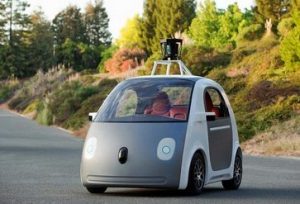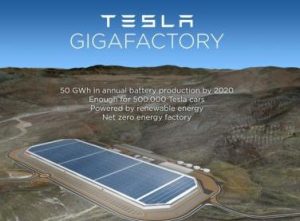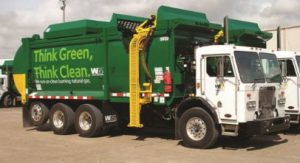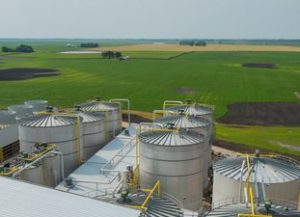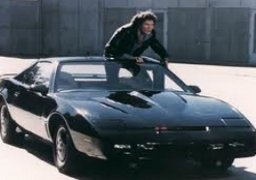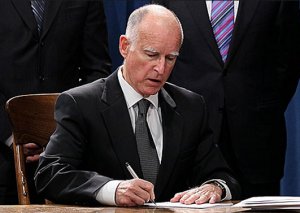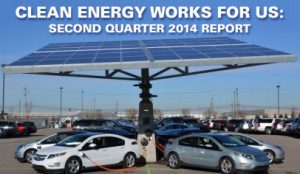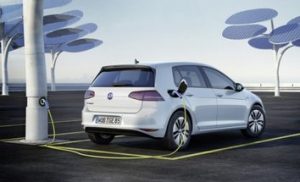 Living in California is a choice made by many, whether they’re originally from Mexico, Korea, or England; or from parts of the United States where the freezing and muggy weather drove them west. It’s a vacation center, and its cities host major conferences and awards shows. Some companies are moving out of California to Texas, while others quickly fill in those now-empty spaces; they’re willing to pay for the land and the workforce to reach the talent they need, and to be located near key partners and clients. The regulatory climate is tougher for businesses to increase earnings in California, but they keep moving or starting up here.
Living in California is a choice made by many, whether they’re originally from Mexico, Korea, or England; or from parts of the United States where the freezing and muggy weather drove them west. It’s a vacation center, and its cities host major conferences and awards shows. Some companies are moving out of California to Texas, while others quickly fill in those now-empty spaces; they’re willing to pay for the land and the workforce to reach the talent they need, and to be located near key partners and clients. The regulatory climate is tougher for businesses to increase earnings in California, but they keep moving or starting up here.
As the state’s Zero Emission Vehicle (ZEV) target shows with other states adopting that policy, what happens in California doesn’t necessarily stay in California. But, how true is that of plug-in electric vehicle sales?
The California Plug-in Electric Vehicle Collaborative just announced a milestone: the 100,000 mark has been crossed. At the end of August, 102,440 plug-in electric vehicles (EVs) have been sold in the state since the launch of the Nissan Leaf and Chevrolet Volt in late 2010. Californians are buying about 40% of all the EVs sold in the US.
“California’s plug-in electric vehicle market is ramping up, and we expect to see significant growth over the next ten years as customers realize how economical and convenient they are,” said California Plug-In Electric Vehicle Collaborative Executive Director Christine Kehoe. The collaborative, made up of key stakeholders in the EV space, are hoping Gov. Jerry Brown’s goal of having 1.5 million EVs on the roads by 2025 can be realized.
As for the rest of the country, EVs just reached their quarter-million sale mark in the US. These announcements were made on the eve of the fourth annual National Drive Electric Week, which is taking place this week – Sept. 15-21, 2014, in more than 130 cities in 35 states.
San Francisco is the top selling US city for EVs, with San Diego and Los Angeles also making a top 10 list issued not long ago by ChargePoint. Other cities making the top 10 were Seattle, Austin, Honolulu, Portland (Ore.), Detroit, Washington, DC, and Boston.
While EVs are impressive in their US sales numbers since their launch in late 2010 – compared to hybrid electric vehicles in 2001 – some analysts see the excitement waning. As a Californian who probably won’t be moving out this state, I’m proud to see the Golden State take another leading role in technology innovation and ambitious environmental targets. The question becomes: How to increase EV sales across the rest of the country?
While interviewing Cary Donovan, vice president at Sam Swope Auto Group in Louisville, Ky., I asked him about the dealer group’s experience selling EVs. Sam Swope Auto Group manages about every brand of car you can think of and works with customers who want to check out all of them. “The BMW i3 and Cadillac ELR offer great technology – they’re world class,” Donovan said. “But American car buyers are not quite ready for them.”
The dealer group had a similar experience selling hybrids. “Hybrids go hot and cold with gas prices,” Donovan said. “Hybrids were confusing to consumers.”
What will it take to win over consumers – and fleets – to purchasing more EVs around the country? This is a very big question, one that I’ve put out to leaders in the industry; and some of them who participate in my monthly stakeholder conference calls. Here are a few ideas to consider on reaching a significant audience outside California:
- Get dealer staff trained on effectively selling EVs: As Donovan said, you’ve got very intelligent consumers walking into dealer offices these days. Dealer sales reps need to be well trained and concise in selling the benefits of an EV to a car shopper. That can be overwhelming for dealers these days with all the mobile devices being paired to electronic controls in cars for GPS, driving directions, music, satellite radio, etc. Selling the EV is too much for many of the staff – if a sharp customer finds out the dealer associate doesn’t know what he or she is talking about, they’ll lose that sell. Sale reps are enticed to direct car shoppers to cars that are easier to sell and will give them their sales commission faster. What about a sales program training staff on how to effectively tell that story in less than 10 minutes? What if they can answer all those questions professionally – incentives, home charging installations and what they cost, charging time, driving range, model options, and payment plans would be great starting points for staff training.
- Reach the four market segments: For automakers and dealer networks, there appears to be four key market segments to reach in marketing programs for EVs. It may be wise to adapt marketing content to each niche. Those interested in the Tesla Model S, BMW i Series, Fisker Karma, and Cadillac ELR, many times are in the near-luxury and upscale luxury consumer segments. They’re most impressed by the performance of the car, the gadgetry on the dashboard, and the brand image – and are willing to pay for them, many times through leasing programs. I would call the second category NextGen technologists; they’re younger consumers who usually buy the next Android, iPhone, or tablet before anyone else does. They bought their share of Leafs and Volts in the early adopter phase. They do have a lot of influence on their peers. Sustainability stewards have environmental concerns and many times belong to environmental groups; they’re likely to have solar panels on their houses, do a lot of recycling, donate to causes, have owned a hybrid for years, and are ready to transition over to EVs. Some of them were among the early adopters. As for the largest group of all: cost savers, which applies to fleet managers as much as consumers. You’ve got to have the numbers in order: acquisition costs with every type of incentive you can find out there; cost per mile compared to gasoline-engine counterparts and current gas prices; maintenance – what’s required and how often (which is a real benefit EVs have over internal combustion engines and all their oil and filter changes). Resale value is another question – it’s still a bit early to have much reliable data on this question, though it hasn’t looked so good for the Nissan Leaf.
- Ramp up production and deliver more EVs to dealers: The Chevrolet Volt is the most obvious example of this issue to me. But there are several observers who say that most of the EV strategies being followed by automakers comes from the “compliance car” conundrum based on California and a few colleague states aiming for zero emission vehicle targets through regulations. There are a lot of attractive EV deals out there for consumers and fleets with state and federal incentives, and OEM and dealer incentives. They need to reach a wider swath of markets for more consumers to take them seriously. Like most new vehicle technologies, they need to cross a few boundaries to see sales growth – that might include displaying them at car shows; ride and drive events; test programs with fleets and car rental companies; partnerships with carsharing agencies; social media campaigns; and special events such as those being carried out during National Drive Electric Week. There are a few dealers out there standing out in their markets as the No. 1 green car dealer. All of this takes more investment, commitment, and staff resources from automakers and dealers – and usually in alliance with event planners, conferences, and car shows. Automakers and dealers will be drivers of change in EV adoption, if they can stand up to the challenge.
- Work things out with Tesla Motors on its retail stores. Dealer groups are not happy to see state legislative and legal settlements allowing a set number of Tesla retail stores within the state, such as the high court ruling in Massachusetts yesterday. That issue was also addressed in New York earlier this year when Tesla was allowed through a settlement to operate five existing stores within the state. I recommend that it be accepted as a resolution. Tesla is fine with it, as are major automakers. The conflicts end, and large dealers will likely go unaffected. The real competition right now is coming down to Tesla vs. BMW for the near-luxury and upscale luxury segments. As for the franchise vs. corporate store battle, that’s one going back to the origins of property law in England that was carried over to the US. That battle will go on for years to come. In the meantime, it’s seems obvious that Tesla isn’t going away. Retailing is morphing as consumers go through most of the decision-making process on their mobile devices and laptops before stepping into a store to close the deal.

